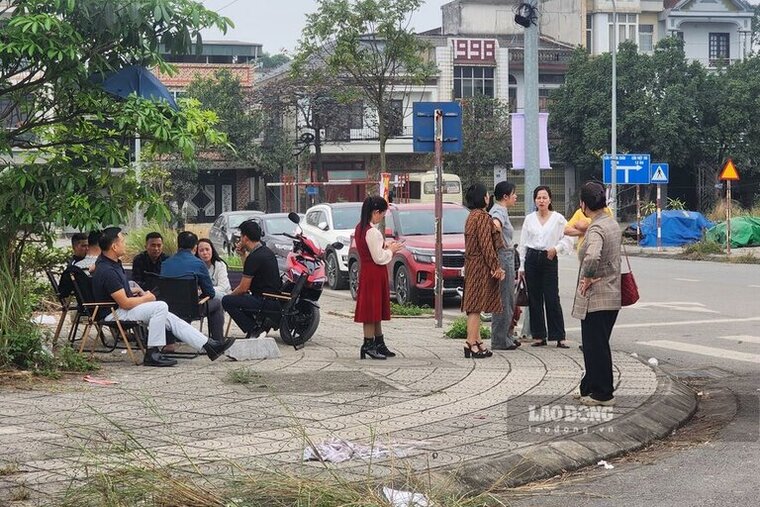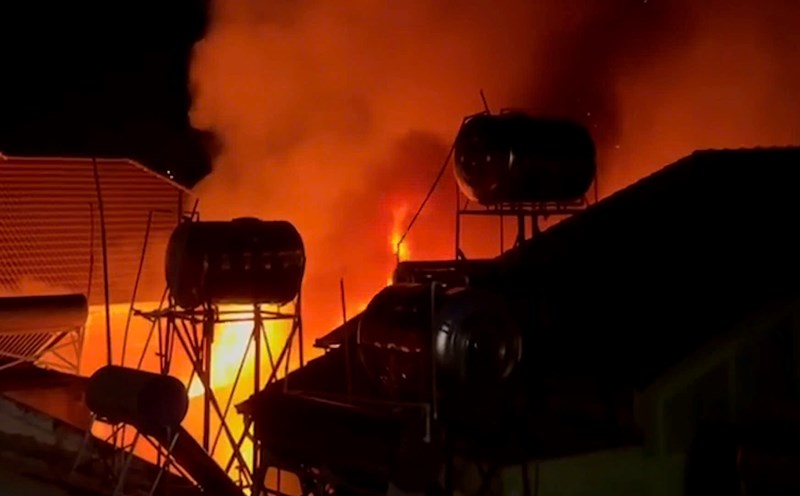The current situation of land fever after the merger rumors
According to updated information from the Market Research Working Group of the Vietnam Real Estate Brokers Association, in localities across the country, just a few weeks since the proposal to merge provinces and cities, land prices in some localities have been pushed up, some places up to 20%. However, in reality, the transaction volume only grows in provinces and cities that are predicted to be the center of merger, with real estate prices not being too high.
Talking to Lao Dong, Dr. Tran Xuan Luong - Deputy Director of the Vietnam Institute for Real Estate Market Research and Evaluation - commented that when information about provincial mergers appeared, some speculative groups could take advantage to manipulate the market. They spread rumors about the new planning and administrative center to stimulate investor buying psychology.
Next, they conduct internal transactions to create a land fever effect, pushing prices up rapidly in a short time. As a result, land prices are pushed too far compared to their real value, causing many investors and buyers to be stuck.
"A typical example is the merger of Ha Tay into Hanoi in 2008. Land prices in many areas such as Ba Vi, Quoc Oai, Thach That were pushed up 2-3 times in just a few months, but then decreased sharply when the actual planning was not as expected. Many small investors are stuck, unable to sell or suffer heavy losses," Dr. Tran Xuan Luong shared.
The Deputy Director of the Vietnam Institute for Real Estate Market Research and Evaluation said that a real estate market with real value often has high liquidity when the buyer has enough finances to conduct the transaction. Planning information of that area must be transparent, confirmed by the authorities, instead of being manipulated by rumors. In particular, transportation infrastructure, electricity, water and public utilities must also be completed, instead of relying only on planning plans on paper.
On the contrary, a virtual market has very clear signs. Land prices are pushed up but there are few real transactions. These areas often have a high rate of abandoned land, no commercial activities or lease. Infrastructure has not been developed synchronously, only relying on unclear planning projects.

Important notes for investors and home buyers
Dr. Tran Xuan Luong said that, in the face of the virtual land fever due to information about merging provinces, investors need to be very cautious. The most important thing is not to follow the crowd mentality. Land purchase should only be done when there is sufficient transparent information about the planning and real value of that area.
Another big risk is using excessive financial leverage. Bank loans for land investment can bring high profits if land prices continue to increase, but there is also a risk of bankruptcy if land prices suddenly decrease.
Therefore, buyers need to calculate carefully before deciding to borrow for investment. In addition, before paying, it is necessary to carefully check the legality of the land plot to avoid the case of buying a disputed land or not having complete documents.
To ensure the healthy development of the real estate market, the State needs to have strict management measures. First of all, the publicity and transparency of planning information is very important. Authorities need to proactively announce land use plans, infrastructure project implementation progress, and strictly handle acts of spreading false rumors to manipulate land prices.
In addition, controlling speculative activities through tax policies is also an effective solution. The State can apply progressive tax on short-term real estate transactions, high tax on abandoned land or land that is slow to be put into use to limit land holdings.
At the same time, credit for the speculative real estate sector also needs to be closely monitored. Banks need to control loan flows, especially land mortgages in areas with signs of virtual fever.











